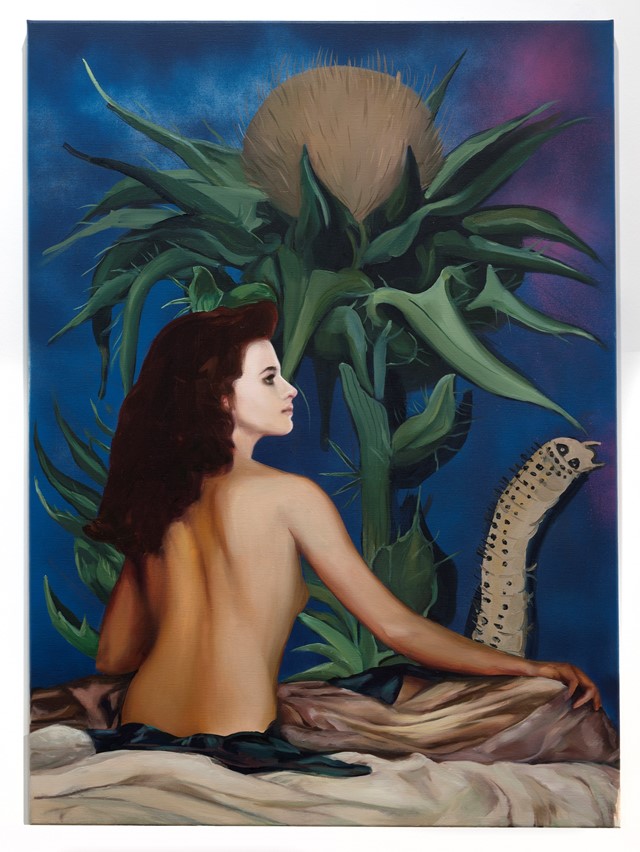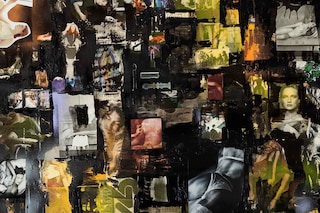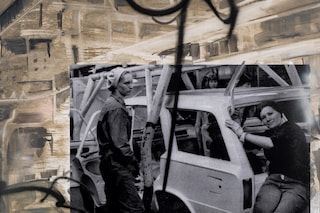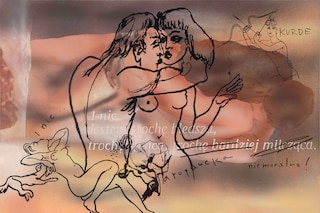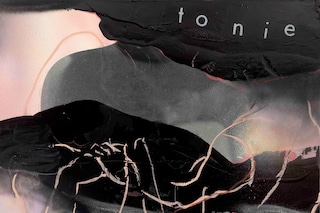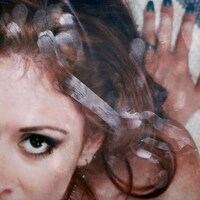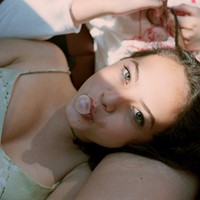Featuring work by Cindy Sherman, Nan Goldin and more, Paulina Olowska’s exhibition Visual Persuasion presents a complex, multifarious perspective of desire
Paulina Olowska’s latest exhibition, Visual Persuasion, is about desire. Occupying almost the entirety of Turin’s Fondazione Sandretto Re Rebaudengo, the show presents existing and new work by the Polish artist alongside her chosen selection of artworks from the Sandretto Re Rebaudengo collection. Featuring the likes of Nan Goldin, Cindy Sherman, Barbara Kruger and Catherine Opie, what emerges is a thrilling, elaborate dialogue between artists working across many decades and mediums exploring women’s perspectives on the mechanics and production of desire and its correlation with consumerism.
“We invited her to do a solo show as well as a curation of our collection. In the end, she put these two aspects together,” explains chief curator Irene Calderoni. “In many ways, her practice is also connected to the idea of curating because, through the years, she’s always involved other artists and given them space inside her own practice, which could also be a way to think about curating. Another aspect is the way she puts together images and ideas and perspectives in order to conceive unique collages.”
The exhibition takes its name from the 1961 book Visual Persuasion by advertising executive Stephen Baker. Among much else, this seminal text explores the capacity of images to sublimate our deepest yearnings with consumer goods, while generating and perpetuating new, powerful desires. Calderoni tells Dazed, “Very much from the Madmen era, it explores masculine ideas of using women’s bodies and sexuality through images to convey a specific message and to persuade people to do something, basically to buy something.” This concept of the subliminal generation of desire and the persuasive power of imagery and fantasy is elaborated on throughout the show.
In this spirit, the Fondazione’s monumental passageway – usually just a transitory space – has been dominated by Olowska with a series of seductive neon signs. As European mid-century cultural artefacts, these illuminated beacons are perfect metaphors for the dynamics of desire. “They relate to the history of Warsaw and, back in the 60s and 70s at the time of socialism, to the idea of consumerism,” Calderoni says. These advertisements existed in the absence of the goods they are advertising, they were meant to decorate the city and create desire but without the object of desire necessarily being available to the consumer.” As such, they were symbols of unquenchable, eternal desire – perpetually unattainable longing, forever unconsummated.
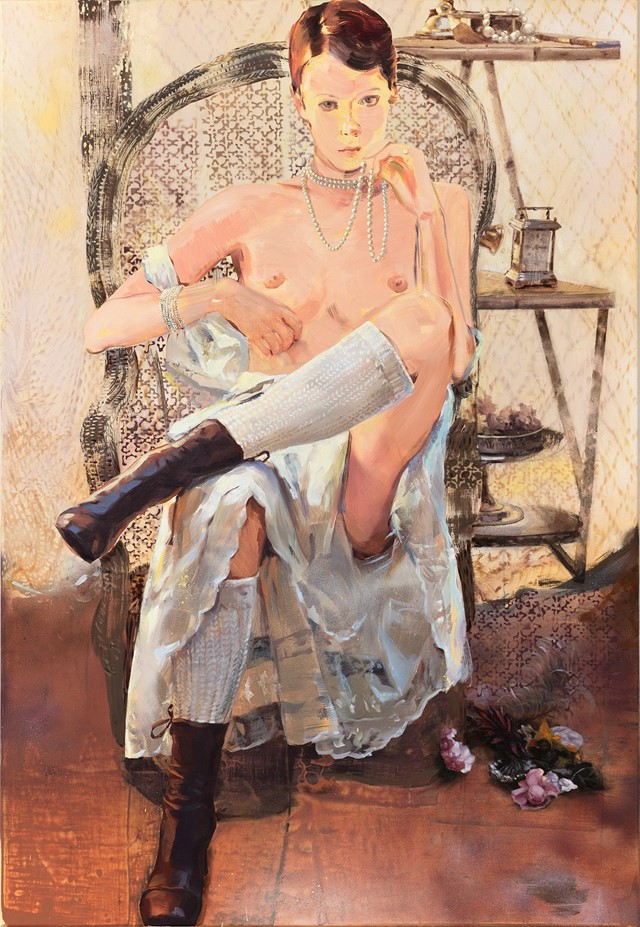
Like the neons, Olowska’s own artworks on display throughout the exhibtion also gesture to the 1970s, evoking fashion editorials and advertisements from the decade as well as recalling scenes from movies by the likes of Rainer Werner Fassbinder and John Cassavetes. “For me, I guess it has many levels because [the 70s] was a moment of what I would call a blossoming of sexuality, of freedom, of spirit,” Olowska explains during a tour of the exhibition. “As an art student, my education on visual language was postmodernism and magazines from the 1970s. The 70s – and maybe even more so the late 60s – was also this moment of post-late socialism when everything everything was still possible. And it feels, for me, like subconscious happiness. I guess certain things or memories bring you joy. But I don’t think it’s nostalgia. For me, what this show is really about is ‘how are we going to create eroticism?’ And ‘how do we want to create the future?’ So I said, ‘Let’s look in the past.’”
In this way, Visual Persuasion ingeniously excavates the past as a way of plotting and anticipating the future. By placing a sculpture by Sarah Lucas in the same room as a portrait by Nan Goldin, in proximity to a painting by Sylvie Fleury and a portrait by Cindy Sherman, inviting visitors to contemplate Sylvère Lotringer’s short film depicting a dominatrix discussing her work alongside a subversive fashion editorial video by Julie Verhoeven, Olowska is asking us to contemplate how images exert their seductive power. Presenting women as both subject and object, embodying a range of cultural archetypes and clichés – from muse, to ingénue, cynical sex worker, nymph, femme fatal, matriarch, vacant mannequin, virgin, and myriad more, Visual Persuasion demystifies the mechanisms of cultural production shaping our desires just as it creates speculative configurations of erotic possibilities.
Visual Persuasion is showing at Fondazione Sandretto Re Rebaudengo until March 3, 2023.
Join Dazed Club and be part of our world! You get exclusive access to events, parties, festivals and our editors, as well as a free subscription to Dazed for a year. Join for £5/month today
